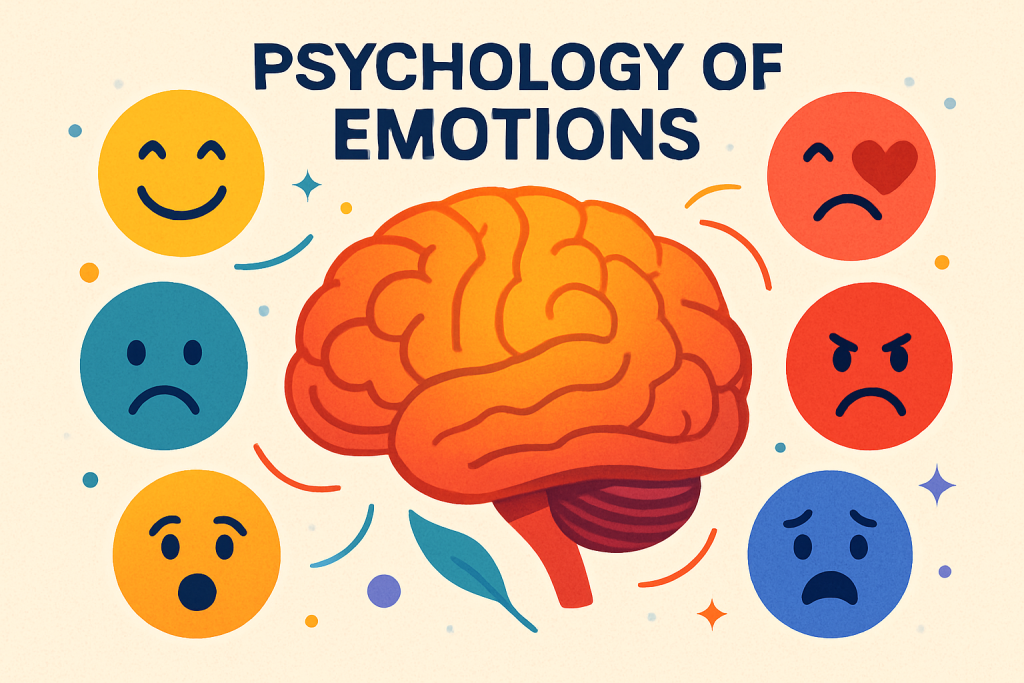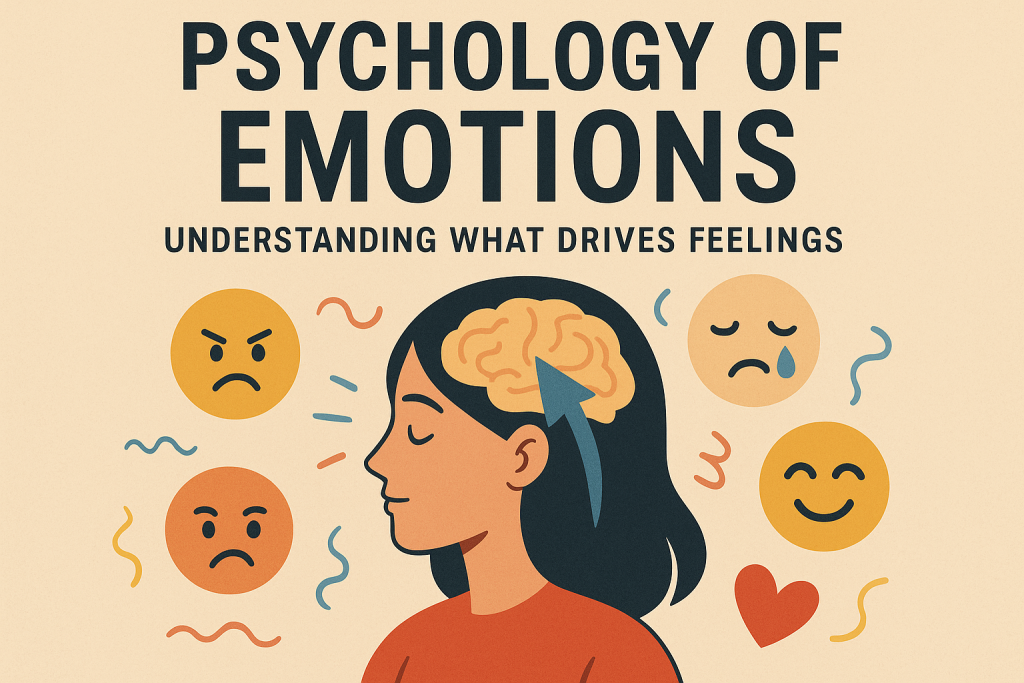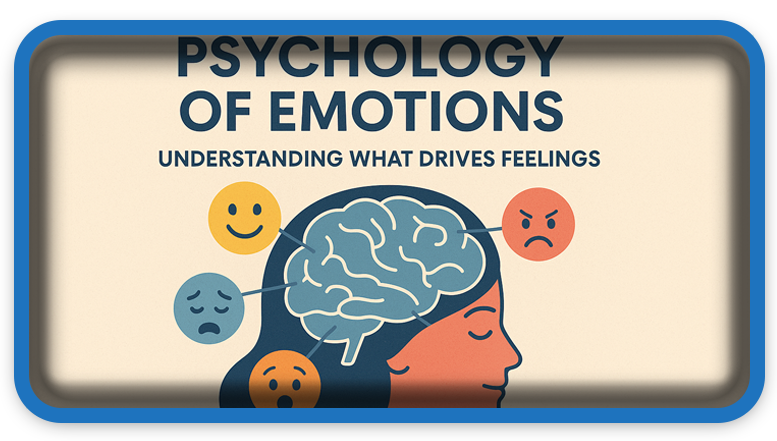⏲️ Estimated reading time: 4 min
What positive emotion do you feel most often?
Psychology of Emotions Understanding Chat Drives Human Feelings. Emotions shape our thoughts, decisions, and relationships more than we realize. The psychology of emotions explores why we feel, how emotions influence behavior, and how mastering them can improve mental health, resilience, and interpersonal connections in everyday life.
Why Emotions Matter
Emotions are at the heart of human experience. They are more than fleeting feelings; they are signals from the brain and body that guide survival, decision-making, and relationships. From joy and love to fear and anger, emotions form the foundation of psychology because they influence both thought and behavior. Understanding the psychology of emotions allows us to recognize patterns, regulate responses, and ultimately live more balanced lives.
What Are Emotions?
Psychologists define emotions as complex psychological states involving three components:
- Subjective experience – what we consciously feel, such as happiness or sadness.
- Physiological response – the body’s reaction, like increased heartbeat, sweating, or hormonal changes.
- Behavioral response – how we act, such as smiling, crying, or withdrawing.
Emotions are not random; they evolved as adaptive mechanisms to help humans survive. For instance, fear triggers the “fight or flight” response, while joy encourages social bonding.
Theories of Emotions
Psychology has proposed several theories to explain how and why emotions arise.
1. James-Lange Theory
This theory suggests emotions occur because of bodily reactions. For example, we feel afraid because we tremble, not the other way around.
2. Cannon-Bard Theory
It proposes that emotions and physiological reactions happen simultaneously, not one after another.
3. Schachter-Singer Two-Factor Theory
According to this model, emotions result from both physical arousal and the cognitive label we assign to that arousal.
4. Lazarus Theory of Cognitive Appraisal
Emotions depend on how we interpret a situation. Two people may experience the same event but feel entirely different emotions based on their perception.
Basic Human Emotions
Psychologist Paul Ekman identified six basic emotions universal across all human cultures:
- Happiness
- Sadness
- Anger
- Fear
- Surprise
- Disgust
Later research expanded this list to include emotions such as pride, shame, and love.
Positive vs. Negative Emotions
- Positive emotions (joy, love, gratitude, hope) encourage growth, creativity, and connection. They broaden thinking and help people build resources.
- Negative emotions (fear, anger, sadness, guilt) often feel unpleasant but serve important functions, like protecting us from harm or helping us learn from mistakes.
Neither is “good” or “bad” by nature; both categories are essential for a balanced emotional life.
How Emotions Influence Behavior
Emotions impact nearly every decision we make:
- Fear may prevent risky actions.
- Anger can drive confrontation or social change.
- Joy makes us more generous and open to new experiences.
- Sadness encourages reflection and empathy.
In business, relationships, and personal growth, emotions influence motivation, communication, and conflict resolution.
Emotional Intelligence (EQ)
A key concept in modern psychology is emotional intelligence. Unlike IQ, which measures cognitive ability, EQ reflects how well someone can:
- Recognize their own emotions.
- Manage emotional reactions.
- Understand others’ feelings.
- Build healthy social connections.
High emotional intelligence is strongly linked to leadership skills, resilience, and overall life satisfaction.
Managing Emotions Effectively
Emotions cannot be eliminated, but they can be regulated. Strategies include:
- Mindfulness and meditation – observing emotions without judgment.
- Cognitive reframing – changing how we interpret events.
- Journaling – expressing emotions in writing to process them.
- Exercise – reducing stress and balancing mood.
- Talking to someone – sharing emotions strengthens social support.
The Role of Culture and Environment
Culture shapes how people express emotions. For example, some societies encourage open displays of sadness, while others promote emotional restraint. Social norms, family upbringing, and environment influence whether emotions are suppressed, expressed, or celebrated.

Emotions and Mental Health
Unregulated emotions can contribute to conditions like anxiety, depression, or chronic stress. Therapy often focuses on helping individuals identify, understand, and process their emotions. Practices like cognitive-behavioral therapy (CBT) are highly effective in reshaping emotional responses.
Practical Ways to Build Emotional Awareness
- Pause before reacting – notice the emotion.
- Name what you feel – labeling increases self-awareness.
- Ask why – discover the trigger.
- Choose your response – act intentionally, not impulsively.
- Reflect daily – check your emotional patterns.
These small steps lead to greater self-control and stronger relationships.

Final Thoughts on the Psychology of Emotions
The psychology of emotions reveals that feelings are not weaknesses but essential tools for survival, growth, and connection. Mastering emotional awareness and regulation empowers us to live healthier, more fulfilling lives. By understanding emotions, we unlock the keys to resilience, empathy, and stronger human bonds.
🔔 For more tutorials like this, consider subscribing to our blog.
📩 Do you have questions or suggestions? Leave a comment or contact us!
🏷️ Tags: psychology of emotions, emotional intelligence, positive emotions, negative emotions, emotion regulation, mental health, self-awareness, human behavior, psychology theories, mindfulness
📢 Hashtags: #Emotions #Psychology #MentalHealth #SelfAwareness #EmotionalIntelligence #Mindfulness #PositiveThinking #HumanBehavior #PsychologyFacts #LifeBalance
Only logged-in users can submit reports.
Discover more from HelpZone
Subscribe to get the latest posts sent to your email.

